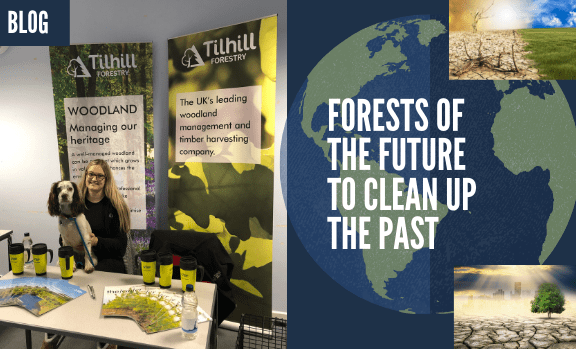by Assistant Forest Manager Hannah Richardson, South-West Scotland.
Climate change continues to be at the forefront in all of our day to day lives. Whilst in Scotland last week we were revelling in the almost 30-degree temperatures, it’s hard not to realise that there may be a sinister cause for our enjoyment. Especially when only 48 hours later areas around the country were experiencing extreme flooding events and recurrent thunderstorms.
Climate change has been discussed by activists, politicians and teachers among many others. There are constant reminders that the actions we take in our lives are detrimentally affecting the planet and our environment.
Carbon footprint is one of the main phrases mentioned when discussing the climate crisis. Every person, town and country has their own carbon footprint. In order to reduce our impact on the planet, and slow the effects of climate change, we all need to work together.
One of the methods of reducing our carbon footprint is to plant more trees which has been established by the Bonn Challenge, a global effort to bring 150 million hectares of the world’s deforested and degraded land into restoration by 2020, and 350 million hectares by 2030.That means if we can successfully restore 350 million hectares of land into forests and woodland then this could sequester 1.7 gigatonnes of carbon dioxide annually.
Every individual tree inside a woodland or forest absorbs carbon. Whilst doing this they release oxygen in an exchange. That same individual tree will release enough oxygen back into the atmosphere to support two human beings for a year. Forests and woodlands can also remove other gaseous pollutants from the air, provide shade and transpire water, all leading to potential reductions in local air temperatures. Pretty powerful stuff.
Despite its possible benefits to combatting climate change there is another link between forests and climate, in that they are also a cause for our changing climate. Deforestation and forest degradation are reversing the change we are working towards, contributing to nearly 20% of all greenhouse gas emissions.
The planting and managing of woodlands and forests sustainably is crucial to slowing the effects of climate change. These forests and woodlands also provide goods for communities that tend to be more climate resilient. In addition to this forests regulate water flow, reduce flood risk, protect soils and enhance habitats.
Diversity is the key to the woodlands we plant in the future. Planting the right tree in the right place is crucial to giving these crops the best chance at survival.
Changes to our climate are bringing increasing temperatures, increasing levels of precipitation and increasing frequency of extreme events. All of these changes have been studied and it is noted that there is a correlation with some pest and disease virality and distribution. Planting diverse forests with a mixture of conifers and broadleaves will increase the likelihood of success across the whole forest or woodland.
It is not all doom and gloom. Planting provides more woodland habitats for species to thrive, opportunities for public enjoyment and more diverse landscapes. Woodland and forest environments provide many positives for us to reap the benefits of, including sustainable forest products, increased job opportunities in the sector and areas for exploration and relaxation. So, despite climate change being the driver for this need we can relax in the knowledge that one of the solutions is benefitting not only the environment, but ourselves too.



